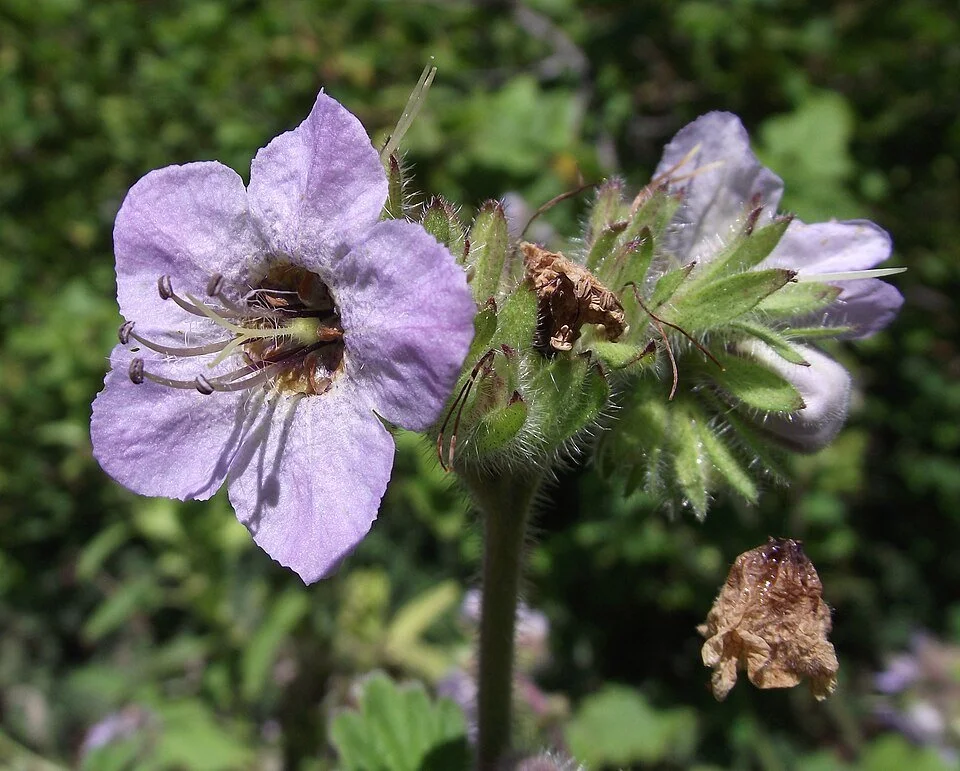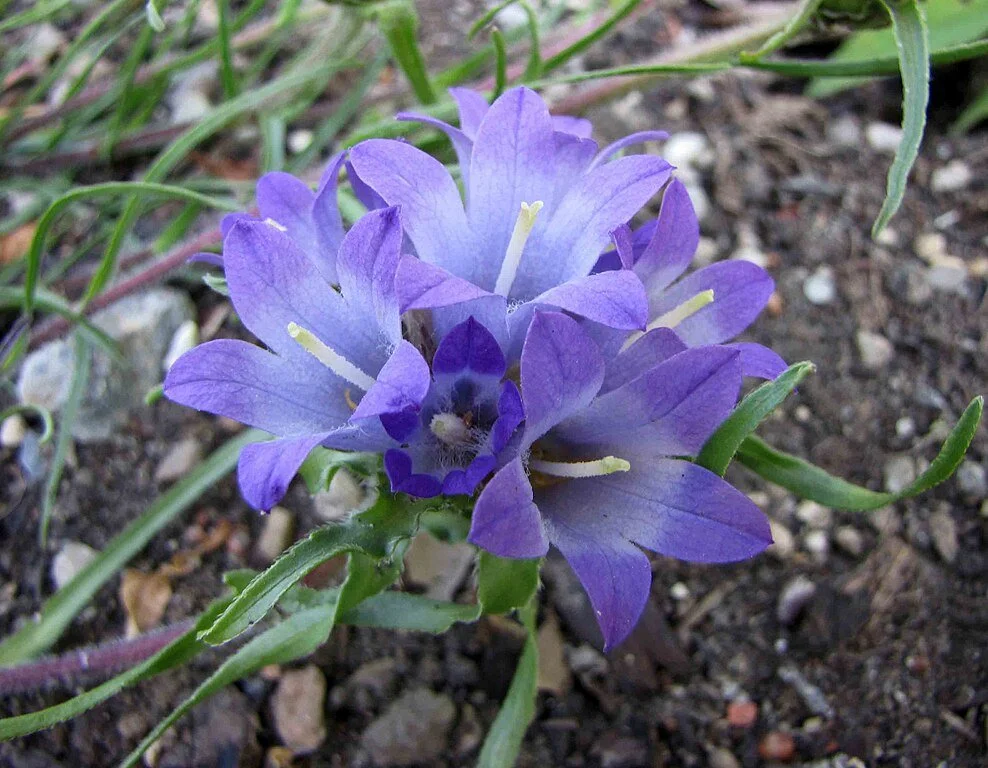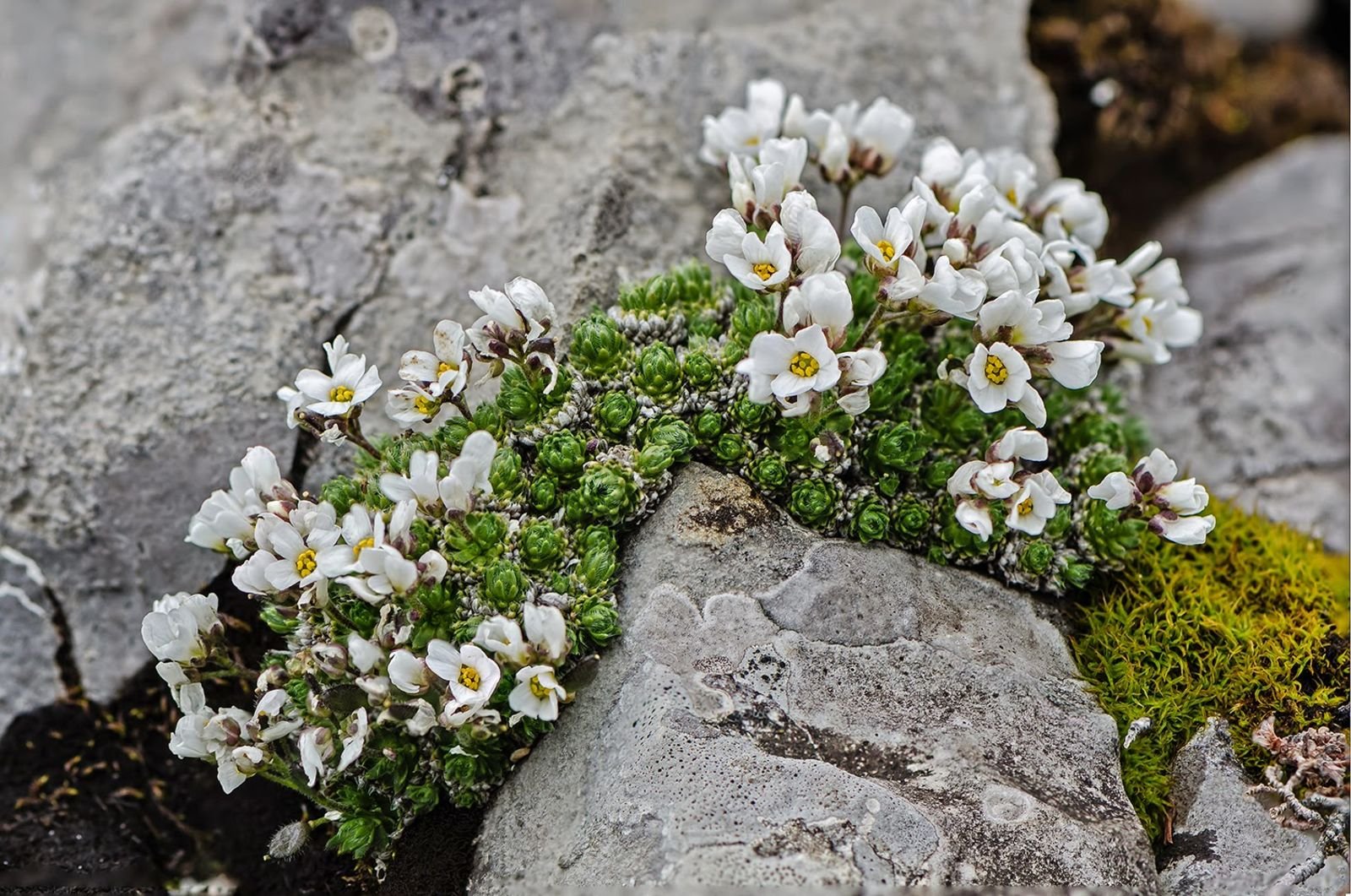

Phacelia bolanderi
Native to the coastal mountains and dry foothills of Oregon and northern California, Phacelia bolanderi is a tough yet graceful perennial of the borage family that thrives in rocky slopes, woodland openings, and well-drained banks. Named for the 19th-century botanist Henry Bolander, this species reflects the rugged beauty of the Pacific Northwest flora.
It forms low clumps of lobed, somewhat crinkled leaves, from which rise slender stems topped with clusters of rich lavender to violet-blue, bell-shaped flowers. Blooming through the summer, often into early autumn, the blossoms are highly attractive to native bees, butterflies, and other pollinators, making it an excellent choice for gardeners seeking both ornamental color and ecological value especially the native plant enthusiast.
In cultivation, P. bolanderi prefers full sun to light shade and a well-drained, gritty soil, echoing the dry slopes of its native habitat. Once established, it is drought tolerant and long-lived, thriving in rock gardens, dry borders, or naturalistic plantings alongside other western natives. Hardy to USDA zone 6, it provides reliable summer color in conditions too lean or dry for many perennials.
Still not widely offered in cultivation, Phacelia bolanderi rewards the gardener with a blend of toughness, wild unrefined beauty, and pollinator activity—a true Western wildflower that bridges ornamental value with ecological resilience.
Native to the coastal mountains and dry foothills of Oregon and northern California, Phacelia bolanderi is a tough yet graceful perennial of the borage family that thrives in rocky slopes, woodland openings, and well-drained banks. Named for the 19th-century botanist Henry Bolander, this species reflects the rugged beauty of the Pacific Northwest flora.
It forms low clumps of lobed, somewhat crinkled leaves, from which rise slender stems topped with clusters of rich lavender to violet-blue, bell-shaped flowers. Blooming through the summer, often into early autumn, the blossoms are highly attractive to native bees, butterflies, and other pollinators, making it an excellent choice for gardeners seeking both ornamental color and ecological value especially the native plant enthusiast.
In cultivation, P. bolanderi prefers full sun to light shade and a well-drained, gritty soil, echoing the dry slopes of its native habitat. Once established, it is drought tolerant and long-lived, thriving in rock gardens, dry borders, or naturalistic plantings alongside other western natives. Hardy to USDA zone 6, it provides reliable summer color in conditions too lean or dry for many perennials.
Still not widely offered in cultivation, Phacelia bolanderi rewards the gardener with a blend of toughness, wild unrefined beauty, and pollinator activity—a true Western wildflower that bridges ornamental value with ecological resilience.










